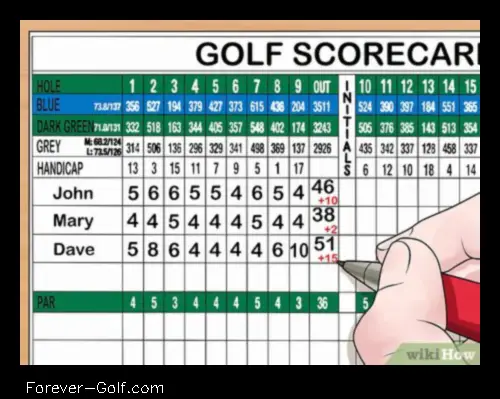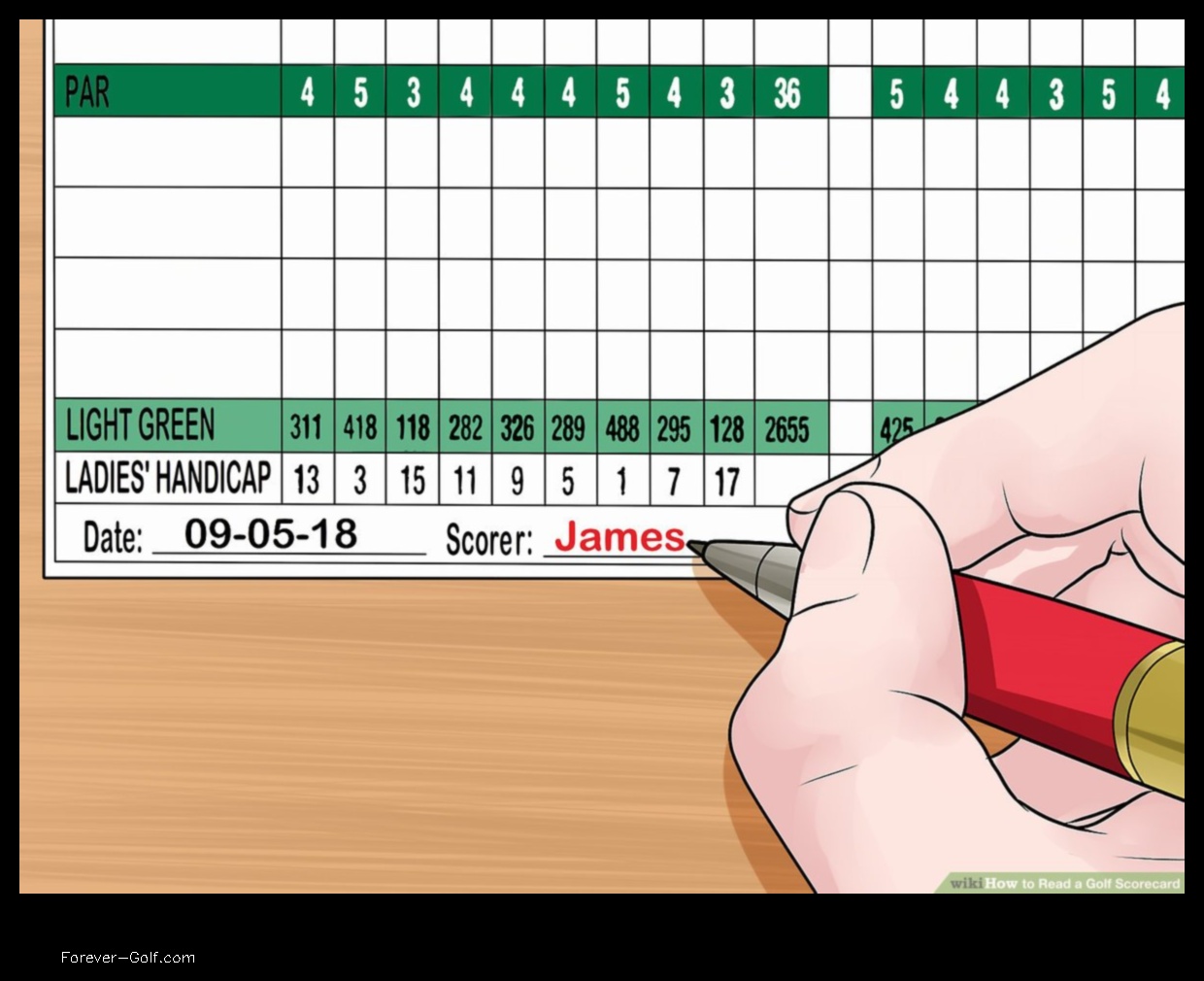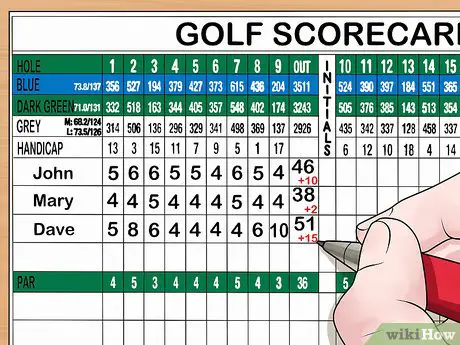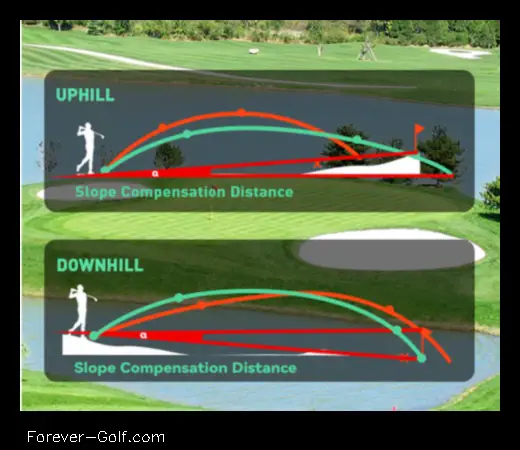
</p>
I. Introduction
II. Scoring System
III. Par
IV. Strokes
V. Bogey
VI. Double Bogey
VII. Triple Bogey
VIII. Eagle
IX. Birdie
X. FAQ
>
| Topic | Answer |
|---|---|
| Golf Scorecard | A golf scorecard is a document used to keep track of a golfer’s score during a round of golf. It typically includes the hole number, par for the hole, the number of strokes taken by the golfer, and the total score for the round. |
| Golf Scoring | The scoring system in golf is based on the number of strokes taken to complete a hole. The par for a hole is the number of strokes that an expert golfer is expected to take to complete the hole. A golfer’s score for a hole is the number of strokes taken plus the par for the hole. |
| Golf Rules | The rules of golf are a set of regulations that govern the game of golf. They cover everything from the way the game is played to the equipment that can be used. |
| Golf Tips | Golf tips are a collection of advice and suggestions that can help golfers improve their game. They cover everything from swing technique to course management. |
| Golf Scoring System | The scoring system in golf is based on the number of strokes taken to complete a hole. The par for a hole is the number of strokes that an expert golfer is expected to take to complete the hole. A golfer’s score for a hole is the number of strokes taken plus the par for the hole. |

II. Scoring System
The scoring system in golf is based on the par for each hole. Par is the number of strokes that a scratch golfer is expected to take to complete a hole. The par for a hole is typically determined by the length of the hole and the difficulty of the green.
For example, a par-3 hole is typically 150-200 yards long, while a par-4 hole is typically 250-400 yards long. A par-5 hole is typically 450-600 yards long.
A player’s score for a hole is calculated by adding the number of strokes they take to the par for the hole. For example, if a player takes 4 strokes to complete a par-4 hole, their score for that hole would be 4 + 4 = 8.
The total score for a round of golf is calculated by adding the scores for each hole. For example, if a player scores a 4 on a par-4 hole, a 5 on a par-5 hole, and a 6 on a par-3 hole, their total score for the round would be 4 + 5 + 6 = 15.
The lowest score possible for a round of golf is a score of 0, which is known as a “bogey-free round.” A bogey-free round is rare, and is considered to be a major accomplishment in the game of golf.
III. Par
Par is the number of strokes a player is expected to take to complete a hole. The par for a hole is determined by its length and difficulty. For example, a par-3 hole is typically shorter and easier than a par-5 hole.
The par for a hole is indicated on the scorecard by a number inside a circle. For example, a par-4 hole would have a 4 inside a circle.
When a player scores par on a hole, they are said to have “made par”.

IV. Strokes
A stroke is counted each time a player hits the ball with a golf club. The number of strokes a player takes to complete a hole is called their score for that hole. The total score for a round of golf is the sum of the scores for each hole.
There are a number of different types of strokes that can be taken in golf. The most common type of stroke is the full swing, which is used to hit the ball from the tee box or from the fairway. Other types of strokes include the chip shot, the pitch shot, the bunker shot, and the putt.
The number of strokes a player takes to complete a hole can vary depending on the difficulty of the hole and the player’s skill level. On a par-3 hole, a player is expected to take 3 strokes to complete the hole. On a par-4 hole, a player is expected to take 4 strokes to complete the hole. On a par-5 hole, a player is expected to take 5 strokes to complete the hole.
If a player takes more strokes than the par for a hole, they are said to have made a bogey, a double bogey, or a triple bogey. If a player takes fewer strokes than the par for a hole, they are said to have made an eagle or a birdie.
V. Bogey
A bogey is a score of one stroke over par for a hole. For example, if the par for a hole is 4, a bogey would be a score of 5. Bogeys are considered to be a bad score, but they are not as bad as a double bogey or a triple bogey.
Bogeys can be caused by a variety of factors, including hitting the ball out of bounds, taking too many strokes to reach the green, or three-putting. However, even the best golfers will occasionally make a bogey.
If you are struggling to avoid bogeys, there are a few things you can do to improve your score. First, try to hit the ball straighter off the tee. This will help you avoid hitting the ball out of bounds and making a double bogey. Second, try to take fewer strokes to reach the green. This will help you avoid three-putting and making a triple bogey. Finally, practice your putting. The more you practice, the better you will become at making putts, and the fewer bogeys you will make.
VI. Bogey
A bogey is a score of one stroke over par for a hole. For example, if the par for a hole is 4, a bogey would be a score of 5.
Bogeys are common on golf courses, and they are not considered to be a bad score. In fact, many golfers would be happy to shoot a round of golf with no more than one bogey per hole.
Bogeys can be avoided by playing each hole carefully and taking your time. It is also important to be realistic about your own abilities and to set realistic goals for yourself.
If you are struggling to avoid bogeys, you may want to consider taking lessons from a professional golf instructor. An instructor can help you identify areas of your game that need improvement and can provide you with tips on how to improve your scoring.
VII. Triple Bogey
A triple bogey is a score of 3 strokes over par on a hole. It is the worst score that can be recorded on a hole, and it is often used as a benchmark for measuring a golfer’s skill level.
To score a triple bogey, a golfer must take 4 strokes to complete a hole that is par 3, 5 strokes to complete a hole that is par 4, or 6 strokes to complete a hole that is par 5.
Triple bogeys are often seen as a sign of poor play, but they can also be caused by bad luck or difficult course conditions. Even the best golfers in the world will occasionally shoot a triple bogey.
If you are struggling to avoid triple bogeys, there are a few things you can do to improve your game. First, make sure that you are taking enough practice swings before each shot. This will help you to get your swing in rhythm and make it more likely that you will hit the ball solidly. Second, focus on hitting the ball in the center of the fairway. This will give you the best chance of making a good approach shot and avoiding trouble. Third, take your time on each shot and make sure that you are taking the correct club for the distance. A rushed shot is more likely to end up in the rough or out of bounds.
If you are still struggling to avoid triple bogeys, you may want to consider taking a lesson from a professional golf instructor. A good instructor can help you to identify the areas of your game that need improvement and develop a plan to improve your scoring.
Eagle
An eagle is a score of two strokes under par on a hole. It is the highest score that can be achieved on a hole, and it is often considered to be the most difficult score to achieve.
To score an eagle, a golfer must hit their tee shot within reach of the green, and then make two putts. This is a very difficult task, as it requires the golfer to hit their tee shot perfectly and then make two very accurate putts.
Eagles are rare, and they are often celebrated by golfers. When a golfer scores an eagle, they will often high-five their playing partners and celebrate with their caddie.
Eagles are also a sign of good golf. When a golfer scores an eagle, it shows that they are playing well and that they are capable of making difficult shots.
If you are looking to improve your golf game, one thing you can do is try to score more eagles. This will help you to become a more consistent golfer and it will also help you to lower your scores.
A birdie is a score of one stroke under par on a hole. For example, if the par for a hole is 4, a birdie would be a score of 3. Birdies are considered to be a good score, and are often celebrated by golfers.
There are a few different ways to achieve a birdie. One way is to hit the green in regulation, which means that you reach the green in two shots or less. You can then two-putt for a birdie. Another way to achieve a birdie is to hit an eagle on a par 5 hole. An eagle is a score of two strokes under par, so a birdie on a par 5 hole would be a score of 3.
Birdies are a sign of good golf, and are often celebrated by golfers. If you’re looking to improve your golf game, one goal you can set for yourself is to make more birdies.
FAQ
Q: What is a bogey in golf?
A: A bogey is a score of one stroke over par for a hole.
Q: What is a double bogey in golf?
A: A double bogey is a score of two strokes over par for a hole.
Q: What is a triple bogey in golf?
A: A triple bogey is a score of three strokes over par for a hole.
- Where Was the First Topgolf in the English Language - April 5, 2024
- Topgolf Back Net Distance How Far Is It - April 5, 2024
- Top Golf Where to Find the Best Golf Experiences Outside of the U.S. - April 5, 2024










